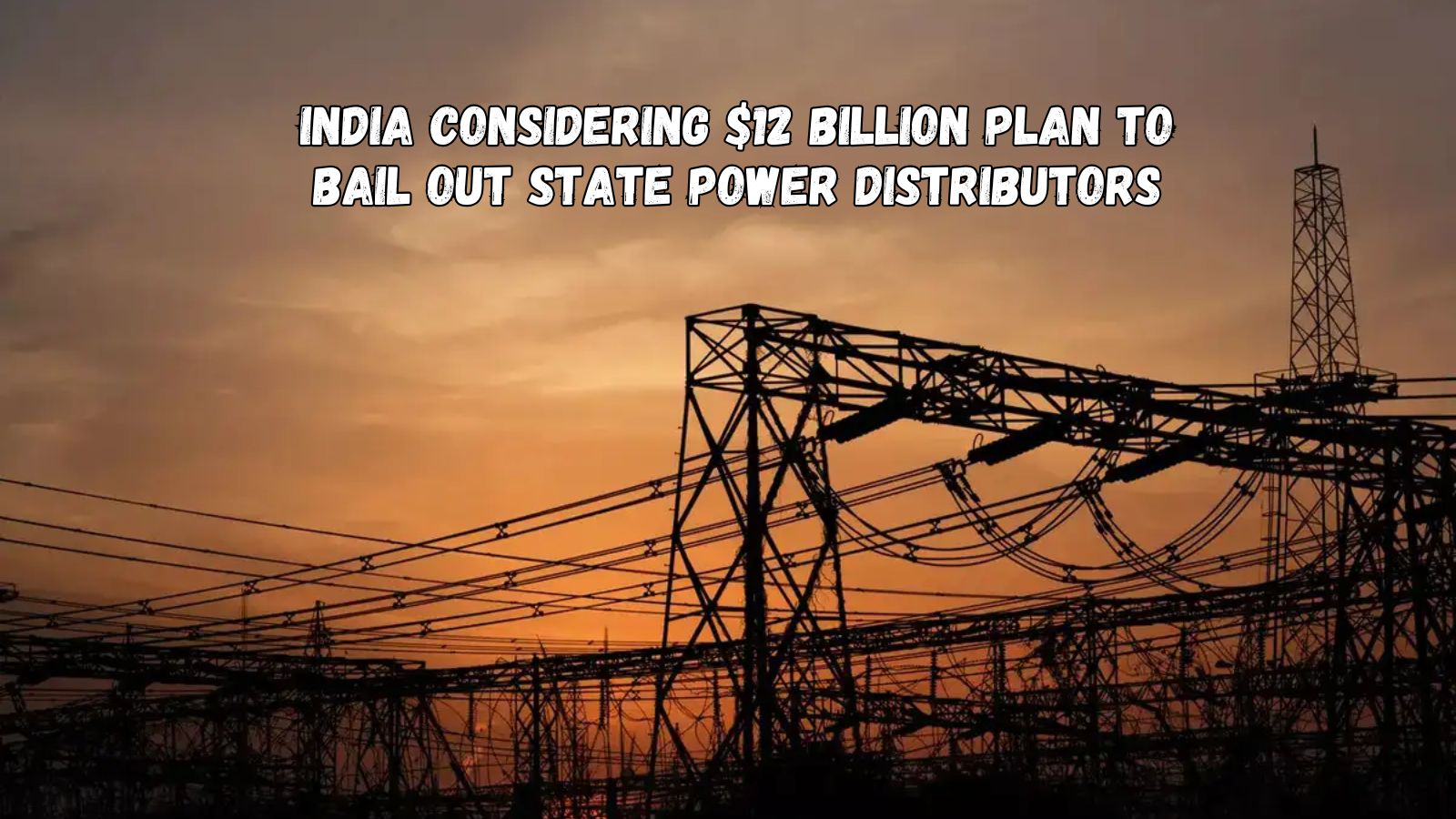India Considering $12 Billion Plan to Bail Out State Power Distributors
The Indian government is currently strategizing a bailout of up to ₹1 trillion ($12 billion) to its state run power distributors that are in financial troubles.
The Indian government is currently strategizing a bailout of up to ₹1 trillion ($12 billion) to its state run power distributors that are in financial troubles.
The action is timely when most state utilities are in huge debt and incurring significant losses. The package is one among many wider reforms that involve privatization alternatives to state utilities, but the plan is also likely to face opposition to privatization in many quarters.
This is the entire discussion of the proposal, its functionality, the people who may be most benefited, and the resulting impact on the power sector.

The government is contemplating bailing out over ₹1 trillion ($12 billion) of the state-owned power distribution companies which are in debt.
The main characteristics of the plan are:
The situation in the state-run power distribution companies is threatening:
Thus, the bailout is not only a relief effort, but structural reform of the power distribution sector is unlocked.
The best companies under this proposal would be the private power distribution and utility companies, which will have the chance of obtaining shares or properties of the state owned companies. For example:
Therefore, the bailout is not simply a burden to the state but it brings new opportunities to the entrants of the private sector and listed companies in the power supply.
Along with the obvious logic of the plan, there are some headwinds:
The move by India to bail out state-run power generators who have debts of up to $12 billion dollars is a significant attempt to bring changes in the sector. The twist: this bailout will be conditional upon the opportunities to privatize state utilities or list them on the market. Although it creates growth opportunities for the private companies and portends systemic improvement, the cost of privatization and implementation is high.
When carried out properly, the reform would transform the sector of distribution, enhance the financial sustainability and bring benefits to both companies and consumers. However, the route will require political determination, regulatory readability and substantive functional transformation.
Q-1. What exactly is India planning with the $12 billion bailout?
Ans- India will offer approximately $12billion in a bid to bail out debt-stricken state electricity distributors with the condition that states would privatize or offer their utilities within the stipulated period.
Q-2. What are the privatization options for state utilities under this plan?
Ans- The states are permitted to develop a new utility and divest up to 51% of the equity or privatise up to 26% of existing utilities to receive federal assistance. Alternatively, they have an option of listing when they do not privatise.
Q-3. Who stands to benefit the most from this plan?
Ans- The most benefitting companies are the private power distribution companies (Tata Power, Adani Power, etc), as they get a chance to gain interests and increase their operations through the scheme they are regarded as the most helpful companies.
Q-4. Why is there expected resistance to privatization?
Ans- Opposition is driven by the fear of loss of employment by utility workers, state control of infrastructure that is vital, increase of tariffs and opposition to the sale of state assets by the political parties.
Q-5. What will this reform mean for electricity consumers?
Ans- Theoretically, consumers will be able to receive superior service, have more trust in power supply and infrastructure in case the reforms are successful. Nevertheless, results will be determined by the successful implementation and implementation state-wide.

The property, complete with 30-seat screening from room, a 100-seat amphitheater and a swimming pond with sandy shower…

The property, complete with 30-seat screening from room, a 100-seat amphitheater and a swimming pond with sandy shower…

The property, complete with 30-seat screening from room, a 100-seat amphitheater and a swimming pond with sandy shower…